Embark on an unforgettable journey through Glasgow’s storied past with the captivating Glasgow Private Walking Tour. Uncover the city’s pivotal role in trade and industry as you explore tales of sedition, the Union of the Crowns, and the prosperous era of transatlantic commerce. Led by knowledgeable guides, this 2-hour experience immerses you in the city’s foundational journey, from its strategic coastal location to the remarkable revitalization that transformed Glasgow into a global powerhouse. Prepare to be captivated by the city’s rich history and vibrant present – there’s more to discover than you might expect.
Key Points
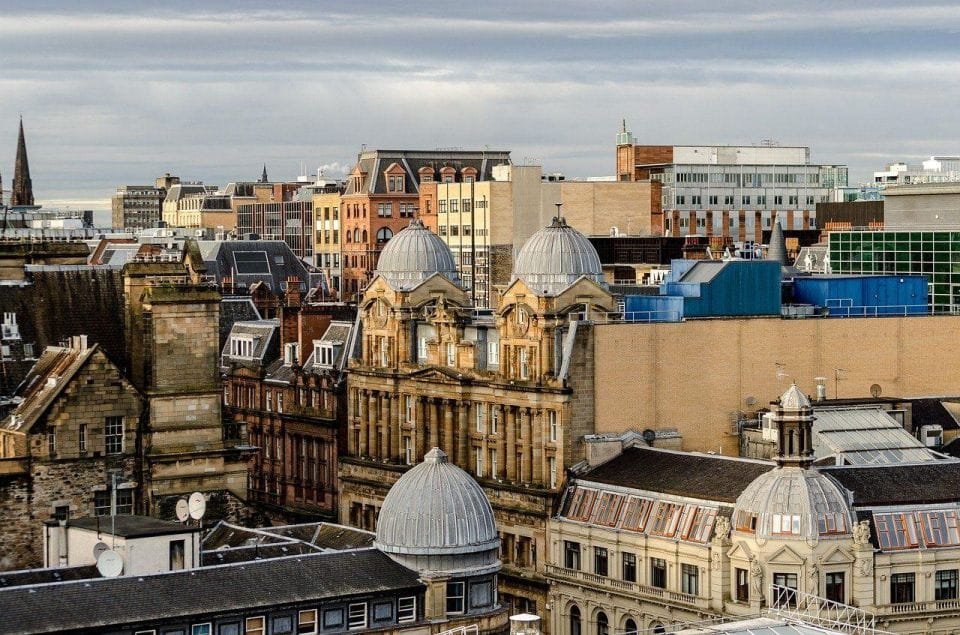
- Explore Glasgow’s rich history and vibrant present with a knowledgeable live guide during a 2-hour private walking tour.
- Discover Glasgow’s strategic role in global trade and commerce, including its prosperous ties with the Americas.
- Uncover stories of sedition and the Union of the Crowns that shaped the city’s foundational character.
- Experience the city’s transformation during the Industrial Revolution and its subsequent cultural and architectural renaissance.
- Visit key landmarks like George Square, Buchanan Street, The Lighthouse, and the Glasgow Royal Concert Hall.
Overview of the Tour
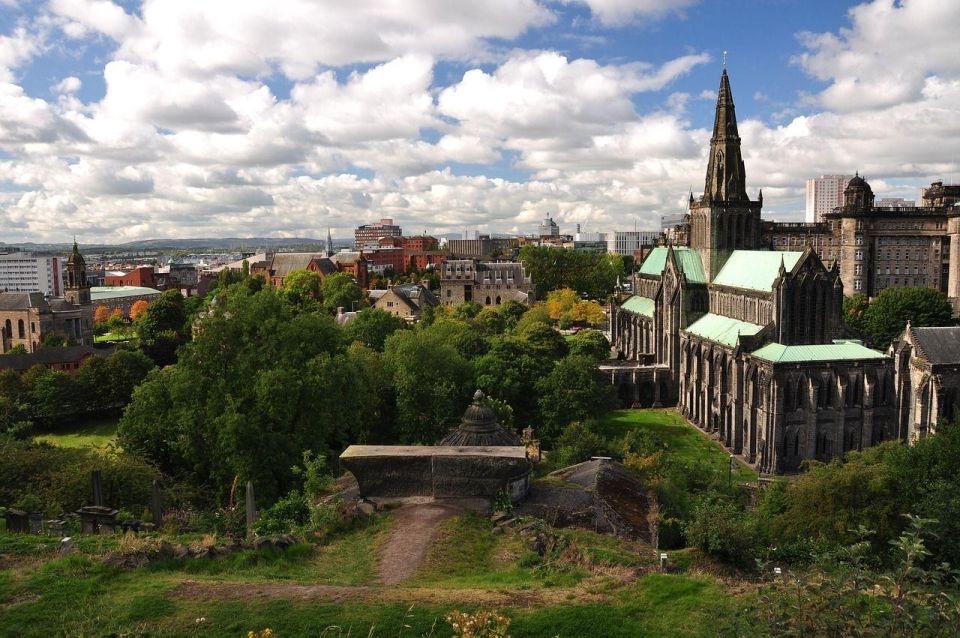
The Glasgow Private Walking Tour offers a captivating 2-hour journey through the city’s rich history and vibrant present, led by a knowledgeable live guide who brings the past to life in English.
Participants will explore Glasgow’s foundational role in trade and industry, uncovering stories of sedition and the Union of the Crowns.
They’ll relive the prosperous trade era with the Americas and the Young Pretender, then dive into the transformative Industrial Revolution that sparked the city’s prosperity.
Along the way, they’ll witness 20th-century revitalization and awe-inspiring construction, all while marveling at the stunning architecture and bustling energy of this dynamic Scottish hub.
Want to keep it personal? More private experiences we love in Glasgow
Foundational Journey and Trade
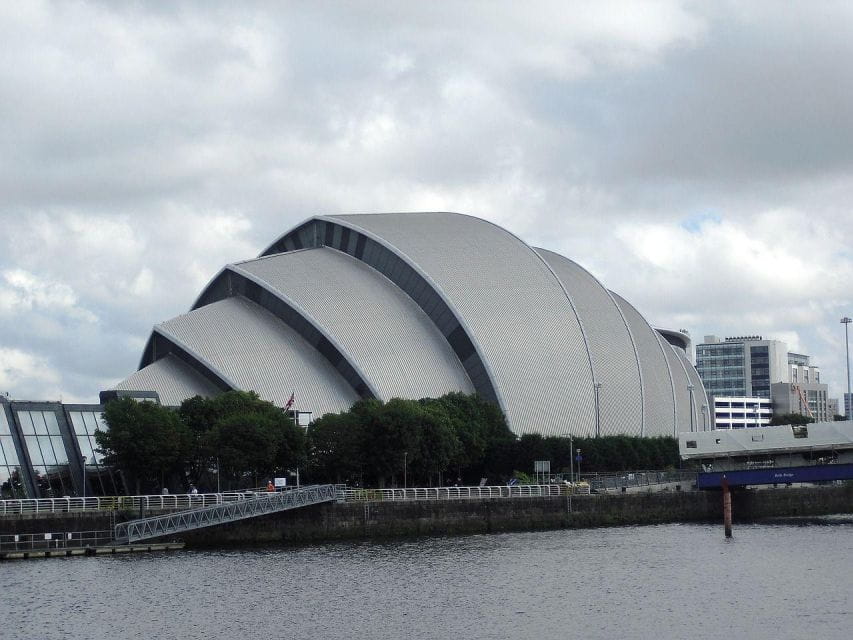
Glasgow’s foundational journey started with its strategic location along major trade routes, positioning the city as a hub for commerce and industry.
As participants explore the city, they’ll uncover how Glasgow’s coastal access and proximity to natural resources fueled its rise as a merchant powerhouse. From the bustling harbor to the thriving trade with the Americas, the tour delves into Glasgow’s mercantile history, revealing the city’s pivotal role in global exchange.
Participants will learn about the Union of the Crowns and the impact of sedition, as well as the influential role of the Young Pretender, all of which shaped Glasgow’s foundational character and laid the groundwork for its future prosperity.
Sedition and Union of Crowns
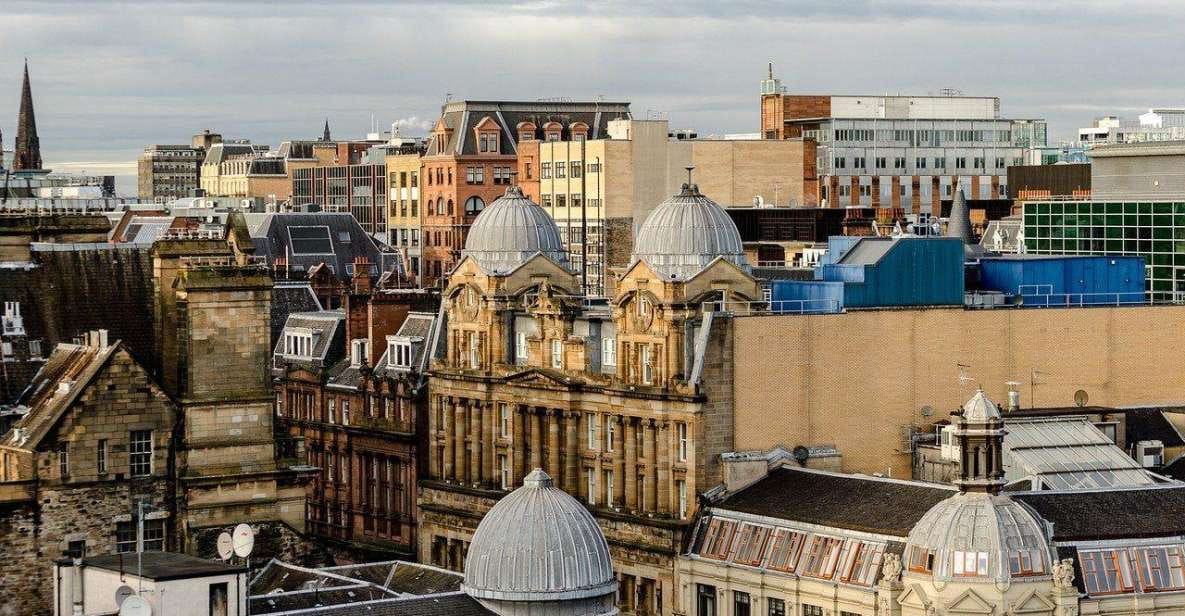
Turbulent times of sedition and political intrigue marked Glasgow’s history, as the Union of the Crowns in 1603 brought both opportunity and upheaval to the city. The merger of the Scottish and English thrones saw Glasgow’s citizens embroiled in the complex web of loyalties and rivalries.
Jacobite sympathizers clashed with staunch Unionists, sparking unrest and violent confrontations. Yet, amidst the turmoil, Glasgow’s strategic location and burgeoning trade with the Americas offered economic promise.
The Young Pretender’s failed Jacobite rebellion in 1745 further cemented the city’s ties to the Crown, shaping its identity as a hub of commerce and industry. Visitors can uncover these captivating tales of sedition and political intrigue that have left an indelible mark on Glasgow’s storied past.
Trade With the Americas
Amidst the political intrigue that gripped the city, Glasgow’s burgeoning trade with the Americas offered promising economic opportunities, as the city leveraged its strategic location to establish lucrative commercial ties across the Atlantic.
Merchants capitalized on the growing demand for goods, shipping an array of products ranging from tobacco and sugar to textiles and manufactured wares.
The trade era also saw the rise of the Young Pretender, whose failed rebellion added an element of excitement and drama to the city’s history.
Glasgow’s trade with the Americas flourished, contributing to the city’s transformation into an influential industrial hub:
- Expansion of merchant networks
- Influx of wealth and investment
- Emergence of new industries
- Architectural and infrastructural developments
Industrial Revolution and Prosperity
The Industrial Revolution swept through Glasgow, ushering in an unprecedented era of prosperity and transformation.
Factories and mills sprang up across the city, harnessing the power of steam and coal to drive the production of textiles, iron, and other goods. This surge in manufacturing activity attracted a steady influx of workers from the surrounding countryside, fueling the city’s rapid expansion and population growth.
Grand civic buildings and ornate architecture emerged, showcasing the wealth and ambition of Glasgow’s industrialists.
The city’s bustling port became a hub for global trade, connecting the region to markets across the world.
This explosive growth laid the foundations for Glasgow’s rise as a global powerhouse, a testament to the transformative impact of the Industrial Revolution.
If you're enjoying exploring Glasgow on foot, you'll love these other walking tours we recommend
20th-Century Revitalization
In the latter half of the 20th century, Glasgow underwent a remarkable revitalization, shedding its industrial grit to emerge as a vibrant, forward-looking city. Spurred by ambitious urban renewal projects and a newfound cultural renaissance, the city transformed itself, breathing new life into its historic streets and neighborhoods.
Iconic structures like the Glasgow Royal Concert Hall, inaugurated in 1990, became symbols of this renaissance, hosting world-class performances and drawing visitors from around the globe. The city’s regeneration extended beyond the arts, with extensive infrastructure improvements and the reclamation of former industrial sites into thriving hubs of commerce and recreation.
Today, Glasgow proudly showcases its reinvention, a testament to the power of vision, determination, and civic pride.
Highlights of Key Locations
Glasgow’s historic George Square, once a hollow filled with stagnant water, now bustles as the vibrant center of the city’s merchant activity. Visitors can admire the grand municipal buildings that frame the square, each adorned with statues celebrating the city’s luminaries. Nearby, Buchanan Street beckons as the second-busiest shopping thoroughfare in the UK, surpassed only by the renowned Oxford Street in London.
| Key Location | Highlights |
|---|---|
| Glasgow Royal Concert Hall | Inaugurated in 1990, home of the Royal Scottish National Orchestra |
| The Lighthouse | A lighthouse in the center of the city, far away from the sea |
| Buchanan Street | Second busiest shopping thoroughfare in the UK, second only to Oxford Street in London |
This vibrant walking tour offers a captivating glimpse into Glasgow’s rich history and dynamic present, inviting visitors to enjoy the city’s storied past and thriving cultural landscape.
Booking and Cancellation Information
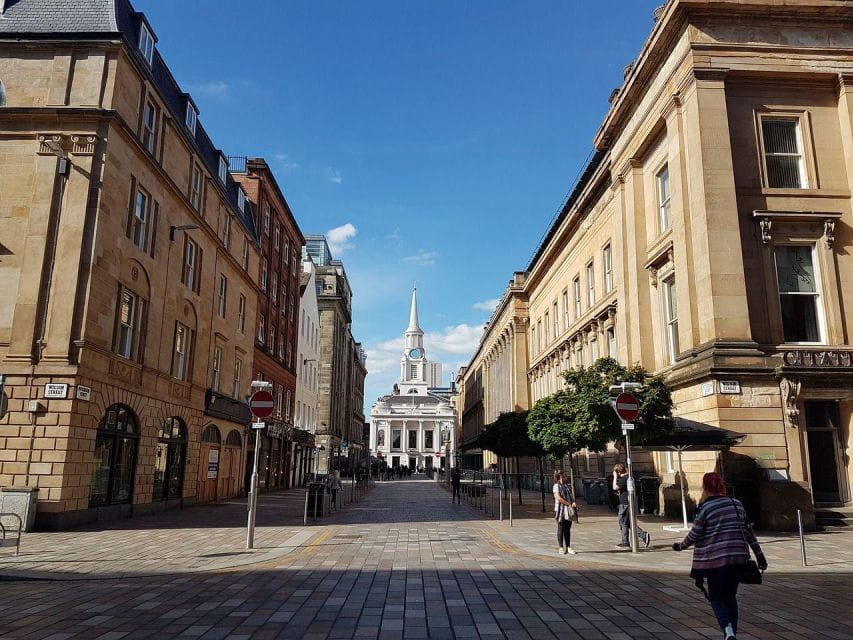
Prices for the Glasgow Private Walking Tour start from £241.77 per group of up to 15 participants, allowing visitors to reserve their spot and pay later.
Guests can take advantage of free cancellation up to 24 hours in advance for a full refund, ensuring flexibility in planning their city exploration.
The booking process is designed to be convenient and hassle-free, with the following options:
- Reserve now and pay later to secure your tour
- Receive a full refund if you cancel up to 24 hours in advance
- Explore Glasgow’s rich history and landmarks at your own pace with a private tour guide
- Customize the experience to suit your interests and preferences
Don’t miss the opportunity to uncover the city’s fascinating past and vibrant present on this immersive walking tour.
Frequently Asked Questions
Is the Tour Wheelchair Accessible?
The tour is wheelchair accessible, allowing visitors of all mobility levels to explore the city’s rich history and landmarks. The guide ensures an inclusive and enjoyable experience for all participants.
Can We Take Photos During the Tour?
Absolutely! Participants are encouraged to capture the vibrant sights and historic atmosphere throughout the tour. With the guide’s insight, you’ll be able to frame stunning photographs that immortalize your exploration of the city’s captivating landmarks.
Are There Any Restroom Breaks During the Tour?
The walking tour generally includes periodic restroom breaks to ensure participants’ comfort and convenience throughout the 2-hour experience. Most stops provide access to public facilities, allowing guests to refresh themselves during the leisurely stroll.
Can We Bring Our Own Food and Drinks?
Yes, guests are welcome to bring their own food and drinks along on the tour. This allows them to stay energized and refreshed as they explore the city’s rich history and landmarks at their own pace.
Is There a Minimum Group Size for the Tour?
The tour has no minimum group size – you can book the private walking tour and enjoy the experience with just their party. The tour is flexible and tailored to the group’s interests, ensuring an engaging and personalized exploration of the city.
Recap
The Glasgow Private Walking Tour offers an unparalleled opportunity to discover the city’s captivating past and vibrant present.
From the strategic coastal location that fueled its rise to the remarkable revitalization that transformed it into a global powerhouse, this tour provides an immersive experience that brings Glasgow’s rich history to life.
Visitors are sure to leave with a newfound appreciation for the city’s pivotal role in trade, industry, and cultural evolution.
More Walking Tours in Glasgow
More Tours in Glasgow
- Glasgow: City and Clyde Bridges Bike Tour with Beer Tasting
- Glasgow: Historical Walking Tour: Guided by a local actor
- Glasgow: Stirling Castle, Loch Lomond Walk, and Whisky Tour
- From Glasgow; Loch Lomond and Highlands Private Day Tour
- Glasgow: Ghouls, Ghosts & Gruesome Tales Guided Walking Tour
- Private Tour of Loch Ness, Pitlochry, Glencoe and Highlands
More Tour Reviews in Glasgow
- Glasgow: City Highlights Guided Bike Tour
- Glasgow : Street Art Walking Tour with A Guide
- Glasgow Necropolis: Private Tour with Local Guide
- Shore Excursion f/Greenock: Glasgow, Kelpies, Falkirk Wheel
- From Glasgow: Standing Stones, Castles & Highlands Tour
- Glasgow: Ebikes and a visit to a Glasgow Distillery!
Not for you? Here's more things to do in Glasgow we have recnetly reviewed
- From Glasgow: Glenfinnan, Loch Lomond & The Highlands
- Glasgow: Scottish Comedy in an atmospheric Scottish venue!
- Glasgow: Secrets & Summer Serves at Glengoyne Distillery
- Isle of Skye & The Highlands: 3-Day Guided Tour from Glasgow
- Glasgow: Gander Walking Tour
- Glasgow: Escape Room The Ghost of Mary Queen of Scots
- Stirling Castle, The Trossachs, Loch Lomond, Chauffeur Tour.
- From Glasgow: Loch Ness, Glencoe and Scottish Highlands Trip
- Glasgow: Highlights of Scotland Tour
- Glasgow: Irish Legacy and St Mungo’s Brewery Tour
- Glasgow: Merchant City Food Tour (city centre)
- Loch Katrine National Park Natural Wonders Scenic Cruise
